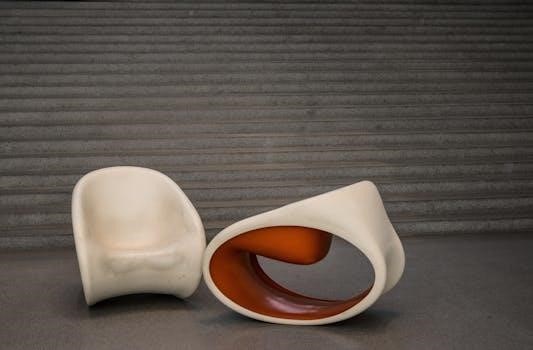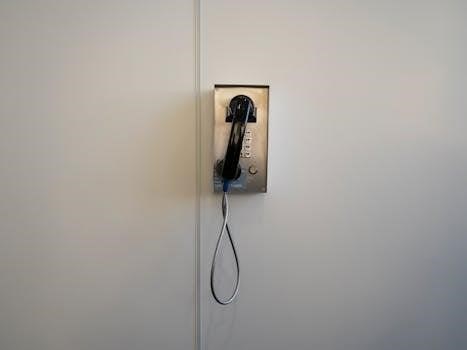Underfloor Heating Design and Installation Guide
Welcome to our comprehensive guide! Here, we’ll navigate the world of underfloor heating (UFH). This guide offers detailed insights into selecting, designing, installing, and initiating UFH systems. We aim to provide all necessary information for successful UFH projects, whether residential or commercial.
Underfloor heating (UFH) presents a luxurious and efficient method for heating spaces, offering radiant warmth evenly distributed throughout the room, from wall to wall and floor to ceiling. This approach contrasts sharply with traditional radiator systems, which often create uneven temperature gradients.
UFH systems are not inherently complex to design or install; however, meticulous adherence to guidelines and instructions is paramount to ensure optimal performance and longevity. The core principle involves circulating heated water or utilizing electric resistance to warm the floor surface, which then radiates heat upwards, warming the room.
The benefits of UFH are manifold. Radiant heat feels comfortable at lower air temperatures, potentially leading to energy savings. Furthermore, UFH can be seamlessly integrated with renewable energy sources, enhancing its eco-friendliness. These systems are suitable for a wide range of floor constructions and can be incorporated into both new builds and existing properties.
Whether you’re a DIY enthusiast or a seasoned professional, understanding the fundamentals of UFH is crucial for a successful installation. This guide aims to provide you with the knowledge and resources necessary to confidently navigate the world of underfloor heating.
Types of Underfloor Heating Systems (Hydronic vs. Electric)
Underfloor heating systems primarily fall into two categories⁚ hydronic and electric. Understanding the distinctions between these types is crucial for selecting the appropriate system for a given application;
Hydronic UFH systems, also known as “wet” systems, circulate heated water through a network of pipes embedded within the floor structure. These pipes are typically made of durable materials like PEX (cross-linked polyethylene). The water is heated by a boiler, heat pump, or other heat source and then pumped through the system, radiating heat upwards.
Hydronic systems are generally more energy-efficient for larger areas due to the higher heat capacity of water. They offer greater control over temperature and can be zoned for individual room regulation. However, installation can be more complex and requires professional plumbing expertise.
Electric UFH systems, also known as “dry” systems, utilize electric heating cables or mats embedded within the floor. When electricity flows through these elements, they generate heat, which radiates upwards. Electric systems are often easier to install, particularly in smaller areas or retrofits.
While electric systems may have lower upfront costs, their operational costs can be higher than hydronic systems, especially in areas with high electricity prices. They also offer less precise temperature control compared to hydronic systems. Selecting between hydronic and electric UFH depends on factors like area size, energy costs, installation complexity, and budget.
Design Considerations for Underfloor Heating
Designing an effective underfloor heating (UFH) system requires careful consideration of several factors to ensure optimal performance and comfort. These design considerations encompass heat loss calculations, floor construction, room usage, and control strategies.

Floor Construction⁚ The type of floor construction significantly impacts heat transfer. Materials like tile and stone are highly conductive and work well with UFH, while wood and carpet can impede heat flow, requiring adjustments to system design. Screed floors are often the most efficient.
Heat Loss⁚ Accurate heat loss calculations are crucial for determining the required heat output of the UFH system. Factors like insulation levels, window sizes, and building orientation must be considered to ensure the system can adequately heat the space.
Room Usage⁚ Different rooms have different heating requirements. Bathrooms, for example, may require higher temperatures than bedrooms. The design should account for these variations to provide tailored comfort levels.
Control Strategies⁚ Effective control strategies are essential for managing the UFH system efficiently. Thermostats, zoning, and smart home integration can optimize energy usage and maintain desired temperatures in different areas.
Pipe Spacing⁚ Proper pipe spacing is vital for even heat distribution. Closer spacing provides more uniform heating but increases installation costs. The design must strike a balance between performance and cost-effectiveness.
Calculating Heat Loss and Requirements
Accurately calculating heat loss is paramount in designing an efficient underfloor heating (UFH) system. This process ensures the system delivers sufficient heat to maintain the desired temperature, regardless of external conditions.

Heat Loss Calculation Methods⁚ Several methods exist for calculating heat loss, ranging from simple estimations to detailed thermal modeling. Manual calculations involve assessing each building element’s insulation value (R-value) and surface area to determine heat transmission.
Software Tools⁚ Specialized software tools can streamline the heat loss calculation process. These programs incorporate complex algorithms to simulate heat transfer, accounting for various factors like weather data, building materials, and occupancy patterns.
Key Factors⁚ Several factors influence heat loss, including⁚
- Insulation⁚ Adequate insulation in walls, roofs, and floors minimizes heat loss.
- Windows and Doors⁚ High-performance windows and doors reduce heat transfer.
- Air Infiltration⁚ Sealing air leaks prevents drafts and minimizes heat loss.
- Building Orientation⁚ The building’s orientation affects solar heat gain, impacting overall heat requirements.

Determining Heat Requirements⁚ Once heat loss is calculated, the required heat output of the UFH system can be determined. This involves considering the desired room temperature, the floor’s thermal properties, and the system’s efficiency.
Oversizing Considerations⁚ While it’s essential to meet heat requirements, oversizing the system can lead to inefficiencies and temperature fluctuations. A properly sized system provides consistent comfort and minimizes energy consumption.
Component Selection (Pipes, Manifolds, Pumps, Controls)
Selecting the right components is crucial for optimal underfloor heating (UFH) system performance. Each element plays a vital role in distributing heat efficiently and maintaining consistent temperatures.

Pipes⁚ The choice of piping material depends on factors like temperature, pressure, and installation method. Common options include⁚
- PEX (Cross-linked Polyethylene)⁚ Flexible, durable, and resistant to high temperatures, PEX is a popular choice.
- PERT (Polyethylene Raised Temperature)⁚ Similar to PEX but with enhanced temperature resistance.
- Copper⁚ Offers excellent heat transfer but can be more expensive and require specialized installation.
Manifolds⁚ Manifolds distribute hot water evenly to different heating zones. Features to consider include⁚
- Number of Ports⁚ Match the number of ports to the number of heating zones.
- Flow Meters⁚ Allow for precise flow rate adjustments in each zone.
- Isolation Valves⁚ Enable individual zone maintenance without shutting down the entire system.
Pumps⁚ The pump circulates hot water through the UFH system. Factors to consider include⁚
- Flow Rate⁚ Select a pump with sufficient flow rate to meet the system’s heat demands.
- Head Pressure⁚ Ensure the pump can overcome the system’s resistance.
- Energy Efficiency⁚ Choose an energy-efficient pump to minimize operating costs.
Controls⁚ Controls regulate the UFH system’s operation and maintain desired temperatures. Options include⁚
- Thermostats⁚ Provide individual zone temperature control.
- Mixing Valves⁚ Regulate water temperature to prevent overheating.
- Central Control Units⁚ Offer advanced features like scheduling and remote access.
Installation Procedures for Hydronic Systems
Installing hydronic underfloor heating requires careful planning and execution. This guide outlines the essential steps for a successful installation.
Preparation⁚ Ensure the subfloor is clean, level, and insulated. Install edge insulation along walls to prevent heat loss.
Manifold Installation⁚ Mount the manifold in an accessible location, typically near the heat source. Connect supply and return lines.
Pipe Layout⁚ Plan the pipe layout according to the design, ensuring even heat distribution. Common patterns include⁚
- Spiral⁚ Provides uniform heat across the floor.
- Serpentine⁚ Simpler to install but may result in uneven heat distribution.
Pipe Attachment⁚ Secure pipes to the subfloor using clips, staples, or track systems. Maintain consistent spacing.
Pressure Testing⁚ Before pouring the screed, pressure test the system to identify leaks. Maintain pressure for at least 24 hours.
Screed Pouring⁚ Pour a screed mixture over the pipes, ensuring complete coverage. Allow the screed to cure according to manufacturer’s instructions.
Connection to Heat Source⁚ Connect the manifold to the heat source (boiler, heat pump) and electrical supply.
Commissioning⁚ Fill the system with water, bleed air, and adjust flow rates. Verify proper operation and temperature control.
Installation Procedures for Electric Systems
Installing electric underfloor heating is a straightforward process that can be completed by a competent DIYer or a qualified electrician. This guide outlines the key steps for a successful installation.
Subfloor Preparation⁚ Ensure the subfloor is clean, level, and insulated. Repair any cracks or imperfections.
Insulation Layer⁚ Install an insulation layer to minimize heat loss and improve efficiency. Use insulation boards designed for underfloor heating.
Mat or Cable Layout⁚ Plan the layout of the heating mats or cables according to the room’s dimensions and heating requirements. Avoid placing cables under furniture or fixtures.
Securing the Mats/Cables: Secure the heating mats or cables to the subfloor using adhesive tape or clips. Ensure even spacing and avoid overlapping.
Sensor Placement⁚ Install the floor temperature sensor according to the manufacturer’s instructions. Position it between two heating cables, away from walls and heat sources.
Electrical Connections⁚ Connect the heating mats or cables to the thermostat and power supply according to local electrical codes. Use a qualified electrician for this step.
Testing⁚ Test the system with a multimeter to ensure continuity and proper resistance. Verify that the sensor is working correctly.
Covering⁚ Cover the heating mats or cables with a self-leveling compound or tile adhesive. Allow it to dry completely before installing the floor covering.
Commissioning and Testing the System
After installation, commissioning and thorough testing are crucial to ensure optimal performance and longevity of your underfloor heating system. This process verifies that all components function correctly and meet design specifications.
Visual Inspection⁚ Begin with a visual check. Inspect all connections, manifolds, pumps, and wiring for any signs of damage or leaks. Ensure all components are securely mounted.
Pressure Testing (Hydronic)⁚ For hydronic systems, conduct a pressure test to identify leaks. Fill the system with water and pressurize it to the manufacturer’s recommended level. Monitor the pressure for several hours to confirm stability.
Electrical Testing (Electric)⁚ For electric systems, use a multimeter to verify resistance and insulation integrity. Check for proper grounding and absence of short circuits.
Thermostat Calibration⁚ Calibrate the thermostat to ensure accurate temperature readings. Compare the thermostat’s display with an independent thermometer.
Flow Balancing (Hydronic)⁚ Balance the flow in each heating loop to ensure even heat distribution. Adjust flow meters or valves to achieve the designed flow rates.
Heat-Up Test⁚ Gradually increase the system’s temperature and monitor its performance. Check for hotspots or cold spots, and adjust flow rates or thermostat settings as needed.
Documentation⁚ Record all test results and commissioning data. Provide the homeowner with a detailed system manual, including operating instructions and maintenance guidelines.
Troubleshooting Common Issues
Even with careful design and installation, underfloor heating systems can occasionally encounter issues. Here’s a guide to troubleshooting common problems⁚
Uneven Heating⁚ If some areas are warmer than others, check flow rates in hydronic systems. Balance the flow in each loop. For electric systems, inspect for damaged heating cables.
System Not Heating⁚ Verify the thermostat is set correctly and functioning. Check the power supply and circuit breakers. In hydronic systems, ensure the pump is operating and there’s no airlock.
Slow Heat-Up⁚ This could be due to incorrect thermostat settings, inadequate insulation, or low boiler temperature (hydronic). Increase the boiler temperature or improve insulation.
Leaks (Hydronic)⁚ Inspect all connections, manifolds, and pipes for leaks. Tighten fittings or replace damaged components. Pressure test the system after repairs.
Noisy Operation (Hydronic)⁚ Air in the system can cause noise. Bleed air from the system using air vents. Check the pump for cavitation.
Thermostat Problems⁚ If the thermostat displays errors or doesn’t respond, check the wiring and replace the thermostat if necessary.
Electrical Faults (Electric)⁚ If the system trips circuit breakers, inspect for short circuits or damaged heating cables. Consult a qualified electrician.
Maintenance and Long-Term Care
To ensure the longevity and efficiency of your underfloor heating system, regular maintenance is essential. Here’s a guide to long-term care⁚
Regular Inspections (Hydronic)⁚ Inspect manifolds, pumps, and pipe connections annually. Look for leaks, corrosion, or damage. Ensure all components are functioning correctly.
System Flushing (Hydronic)⁚ Every 5-7 years, flush the system to remove sludge and debris. This improves heat transfer and prevents blockages. Add corrosion inhibitors after flushing.
Pressure Testing (Hydronic)⁚ Periodically pressure test the system to check for leaks. This is especially important after any maintenance or repairs.
Thermostat Calibration⁚ Check the thermostat’s accuracy and recalibrate if necessary. Replace batteries in wireless thermostats regularly.
Electrical Checks (Electric)⁚ Periodically inspect electrical connections and wiring for damage. Ensure the system is properly grounded.
Floor Covering Care⁚ Follow the manufacturer’s recommendations for cleaning and maintaining floor coverings. Avoid using abrasive cleaners that could damage the floor.
Professional Servicing⁚ Schedule professional servicing every few years. A qualified technician can identify and address potential issues before they become major problems.
Proper maintenance ensures efficient operation, extends the system’s lifespan, and prevents costly repairs.
